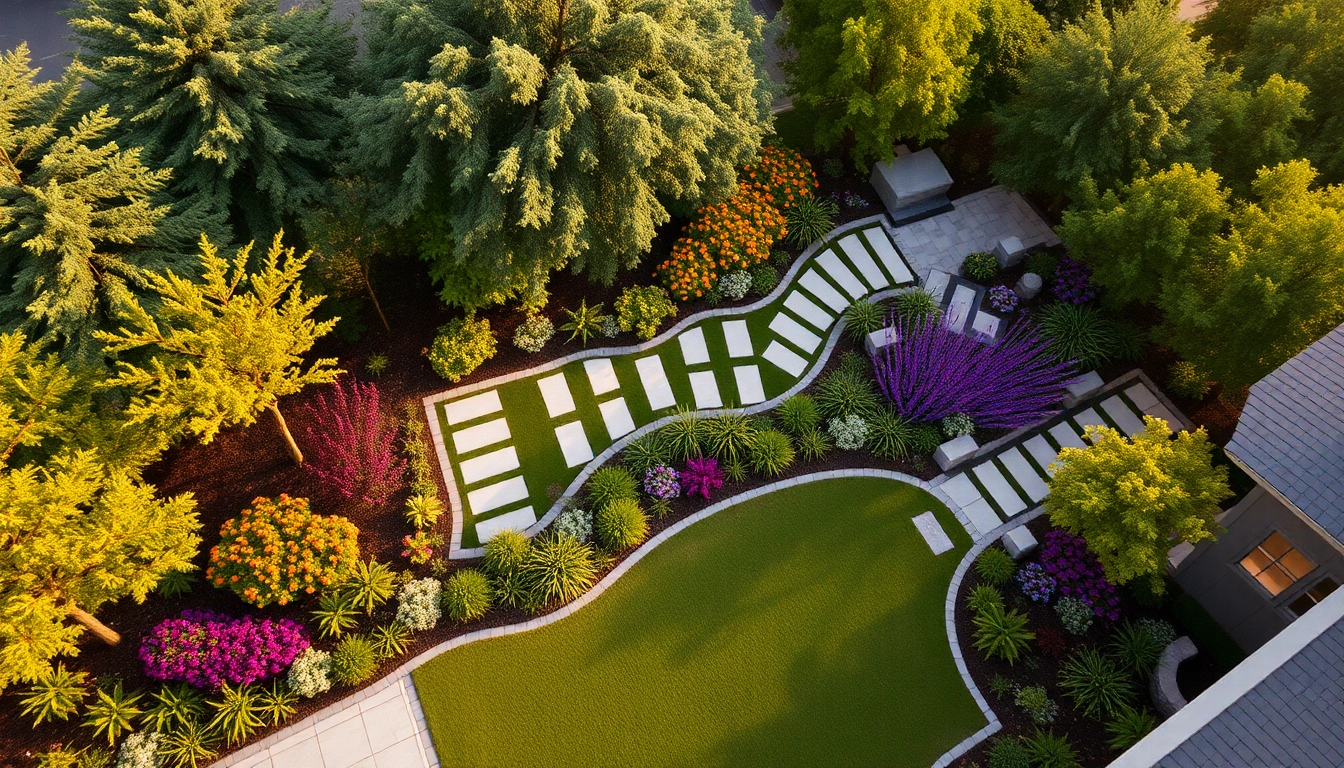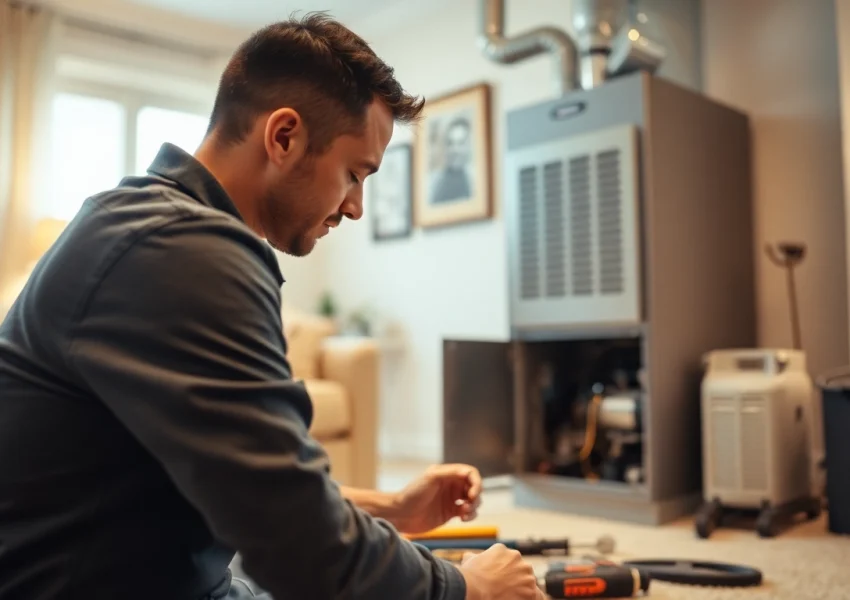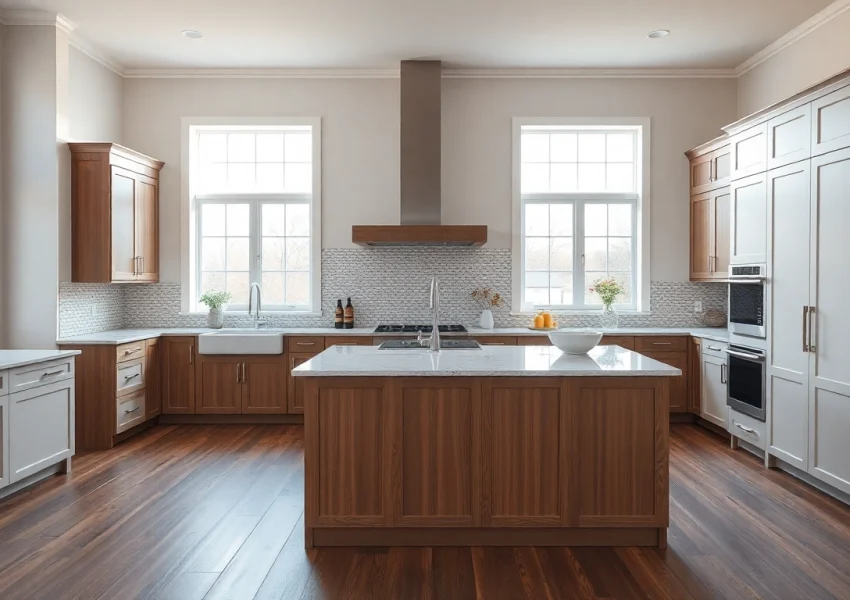Understanding Landscape Design Services
Landscape design is a holistic approach to enhancing outdoor spaces, combining creativity, nature, and artistry to shape the environment around us. Engaging in a landscape design service can transform not just the appearance but also the functionality of your garden, yard, or commercial space. In this guide, we delve into the fundamentals of landscape design services, the significance of professional designers, and the essential elements that contribute to an effective landscape.
What is Landscape Design?
Landscape design is the art and science of analyzing, planning, and managing land and its features to create beautiful outdoor environments. This process encompasses various aspects, including horticulture, geography, environmental psychology, and design principles. Essentially, landscape designers work to create systems of outdoor spaces that are both functional and aesthetically pleasing.
It’s crucial to distinguish between various disciplines within this field. While landscaping often refers to the physical installation of plants and structures, landscape design involves strategic planning and implementation that considers ecological and environmental factors. A comprehensive landscape design includes site analysis, a design concept, plant selection, materials, and ongoing maintenance.
Importance of Professional Landscape Design Services
Choosing to engage professional landscape design services offers numerous benefits:
- Expertise: Landscape designers are trained to understand plant growth, site conditions, and design principles.
- Time Efficiency: Professionals can complete designs significantly faster than an untrained individual might.
- Cost-Effective: While it may seem more economical to do it yourself, the mistakes made without professional guidance can lead to higher costs long-term.
- Enhanced Property Value: An aesthetically pleasing landscape can dramatically increase the curb appeal and overall value of a property.
Key Elements of an Effective Landscape
Every effective landscape design incorporates several crucial elements:
- Unity: Successful landscapes are cohesive, with elements that complement each other.
- Color: The use of color can affect the mood and atmosphere; bright flowers or foliage can inject energy, while neutral colors induce calm.
- Texture: Different plants and materials offer various textures that enhance visual interest.
- Scale and Proportion: The size of landscape elements must relate to one another and the overall space to ensure balance.
- Line and Form: Lines can guide the eye and create a pathway, while forms add dimension.
Choosing the Right Landscape Design Service
Selecting the ideal landscape design service can significantly influence the success of your project. Be meticulous in your evaluation of potential designers to ensure you get the best results.
Evaluating Local Landscape Designers
Begin by researching local landscape designers. Look for those with established reputations and solid portfolios showcasing their previous work. Check online reviews and ask for recommendations from friends or family who have undertaken similar projects.
What to Look for in a Landscape Design Portfolio
A designer’s portfolio should provide insights into their style, creativity, and capabilities. Pay attention to:
- Diversity of Projects: Look for versatility in different styles, plant types, and project scopes.
- Before and After Photos: This helps you visualize transformations they can create.
- Attention to Detail: Quality images that showcase fine details reflect a designer’s professionalism.
- Client Testimonials: Feedback from previous clients can highlight strengths and weaknesses.
Questions to Ask Your Landscape Design Service Provider
Prepare a list of questions to assess the landscape design service’s suitability:
- Can you provide references from past clients?
- What is your design philosophy or approach?
- How do you incorporate sustainability into your designs?
- What is your process for site analysis?
- Will you handle all aspects of the project, or will I need additional contractors?
Popular Landscape Design Trends
Keeping abreast of the latest trends in landscape design can inspire ideas for your project. Many contemporary designs focus on sustainability, functionality, and aesthetic appeal.
Sustainable and Eco-Friendly Designs
As environmental concerns grow, sustainable landscape design has gained popularity. This approach emphasizes using native plants, which require less water and maintenance, and implementing drought-resistant techniques to create eco-friendly landscapes. Features such as rain gardens, permeable paving, and composting systems can reduce runoff and promote ecological health.
Incorporating Hardscapes for Functionality
Hardscaping involves the use of non-plant elements, such as patios, walkways, walls, and water features. Effective incorporation of hardscapes can enhance the usability and aesthetic of your exterior space. Incorporating structures like decks, patios, or retaining walls can create distinct areas within your landscape, allowing for activities like dining, entertaining, or relaxing.
Color Schemes and Plant Selections that Stand Out
Color plays a vital role in conveying mood and setting the atmosphere. Designers increasingly favor bold and vibrant color schemes that use a mix of flowers, foliage, and hardscaping materials. Plant selection is focused on creating year-round interest through seasonal color changes and textural variety, which adds depth and intrigue to the landscape.
Steps to Implementing Your Landscape Design
Implementing your landscape design requires careful planning and execution. From initial consultation to final installation, understanding the process can lead to a successful landscape transformation.
Pre-Design Considerations and Site Analysis
Before commencing any design work, conduct a thorough site analysis. This should include evaluating the soil quality, existing vegetation, sunlight availability, and drainage patterns. Understanding your site conditions is critical to making informed design choices. These assessments will provide insights into what types of plants will thrive in your environment and how water will flow across the landscape.
Budgeting for Landscape Design Services
Establishing a realistic budget is vital for any landscape project. Determine how much you can afford to spend and allocate funds for each component, such as plants, hardscapes, and design fees. Most landscape designers can tailor a solution to fit within your budget while maximizing aesthetic value. Discussing your financial parameters up front can ensure alignment throughout the design process.
Maintaining Your New Landscape After Installation
Once your landscape is installed, proper maintenance is essential to ensure longevity and health. Regular tasks include watering, weeding, pruning, and inspecting for pest issues. Setting up a maintenance schedule or hiring a professional service can ease the workload and promote vibrant plant growth.
Measuring the Success of Your Landscape Design
Assessing the impact of your landscape design project involves evaluating various performance metrics. Consider success to include not just the visual appeal but also the function and health of your outdoor space.
Setting Performance Metrics for Your Landscape
Clearly define what success means for your landscape project. Metrics can include plant health and growth, overall aesthetic satisfaction, functional use of space, and the environmental benefits realized. Regular assessments will enable you to adjust maintenance practices and planning as necessary, ensuring your landscape remains thriving and functional.
Client Testimonials and Their Impact on Design Choices
Feedback from clients can significantly influence future landscape design choices. Gathering testimonials not only helps to evaluate your satisfaction with the design, but it can also guide designers in their future projects. Consider documenting your thoughts and experiences after your project is complete, as this information serves as invaluable feedback for both the designer and other potential clients.
Updating Your Landscape Over Time
Landscapes evolve as plants grow and seasons change. Periodic updates can keep your landscape looking fresh and relevant. As you observe changes, consider adding new plants, refreshing hardscapes, or modifying designs to adapt to your current needs or preferences. Engaging with your landscape over time can deepen your appreciation and enhance your space’s functionality.






